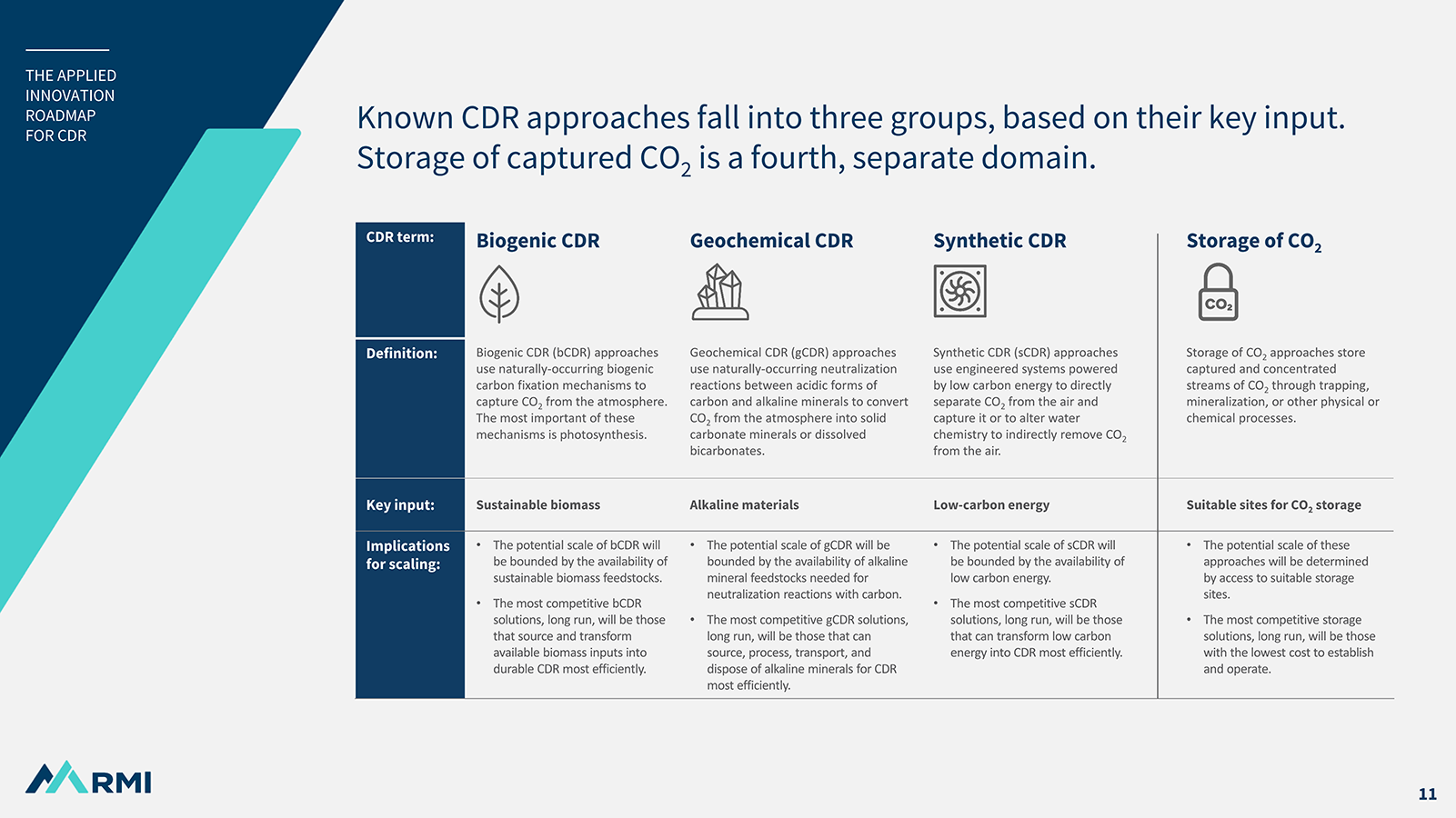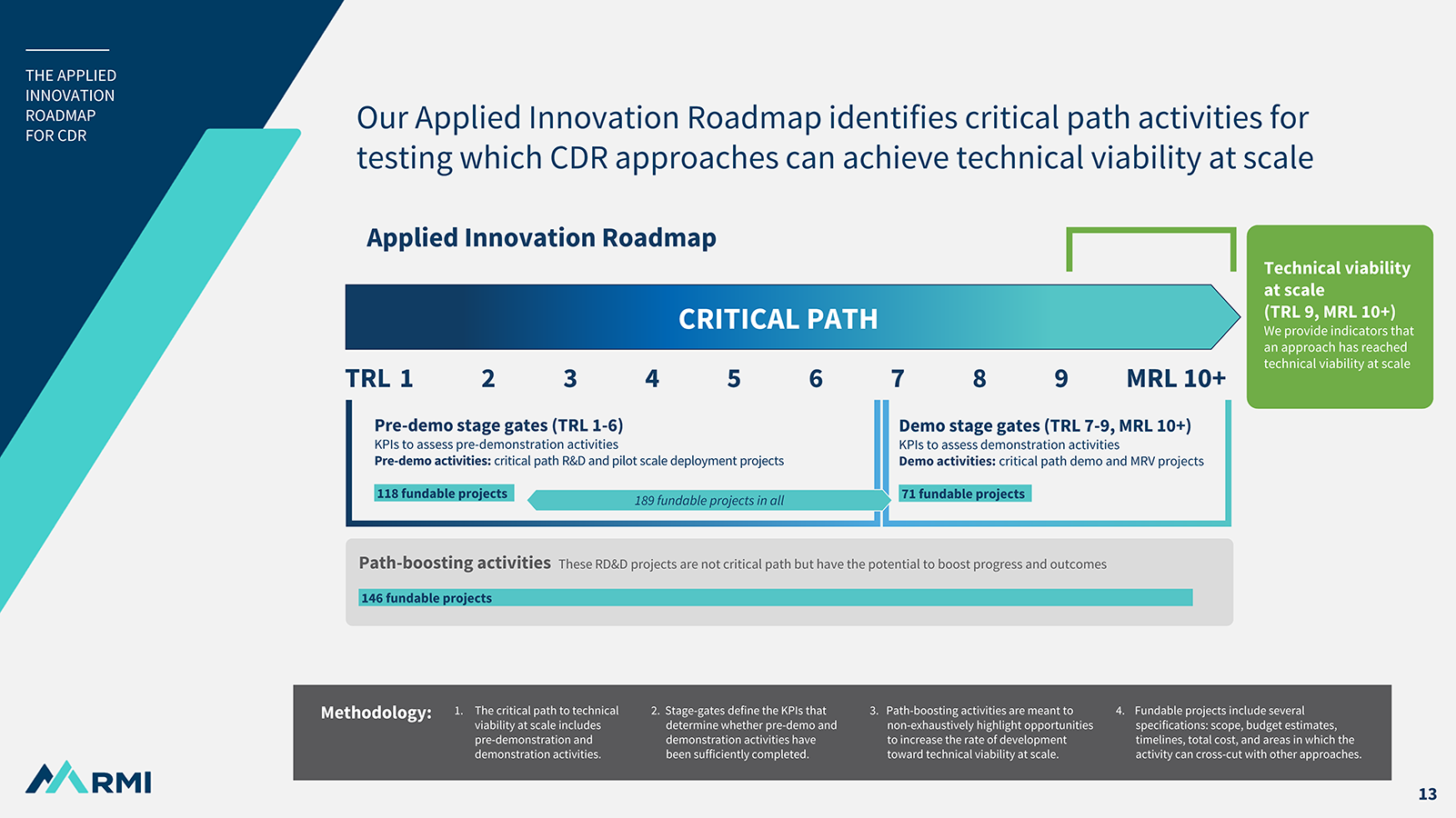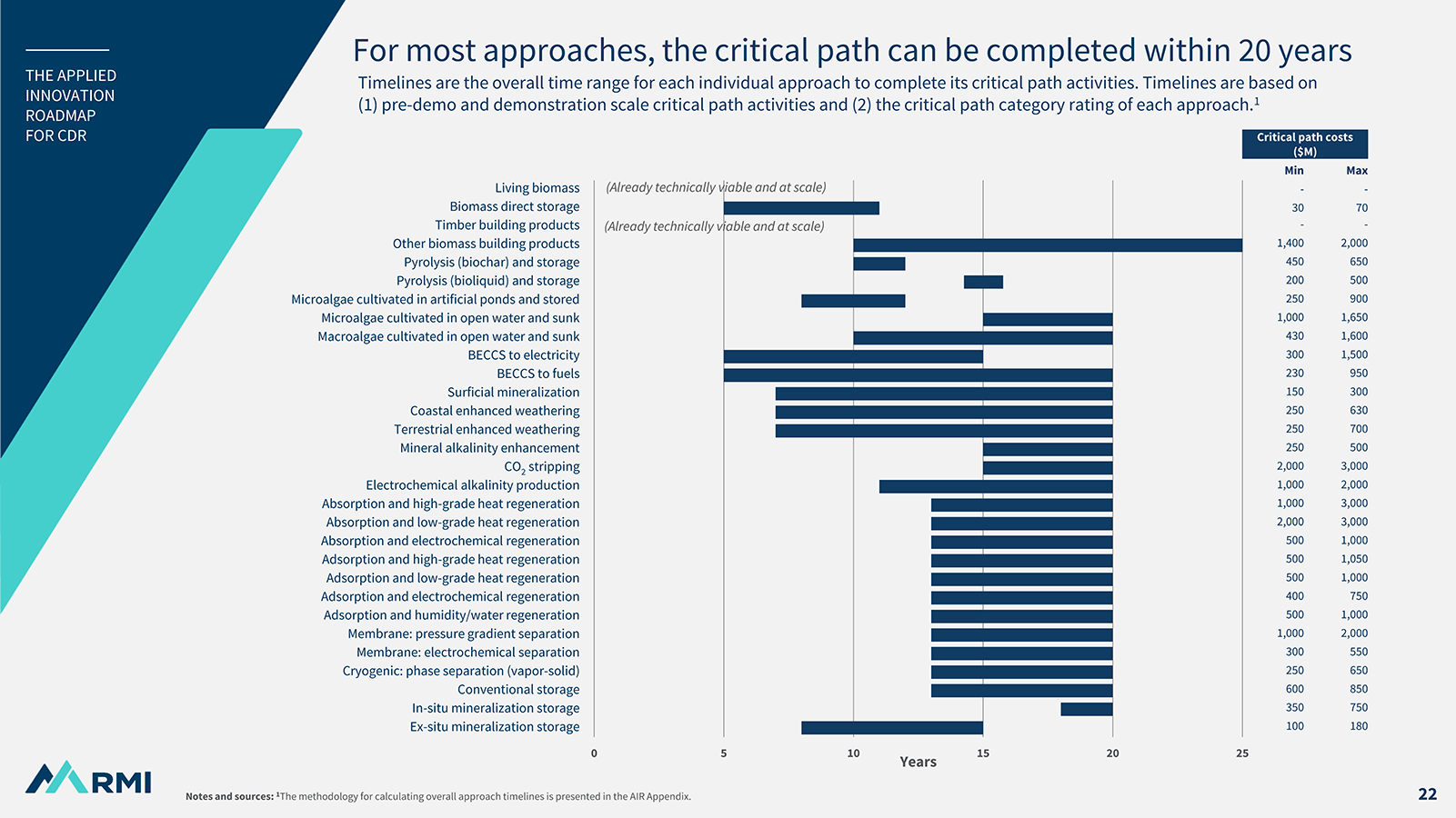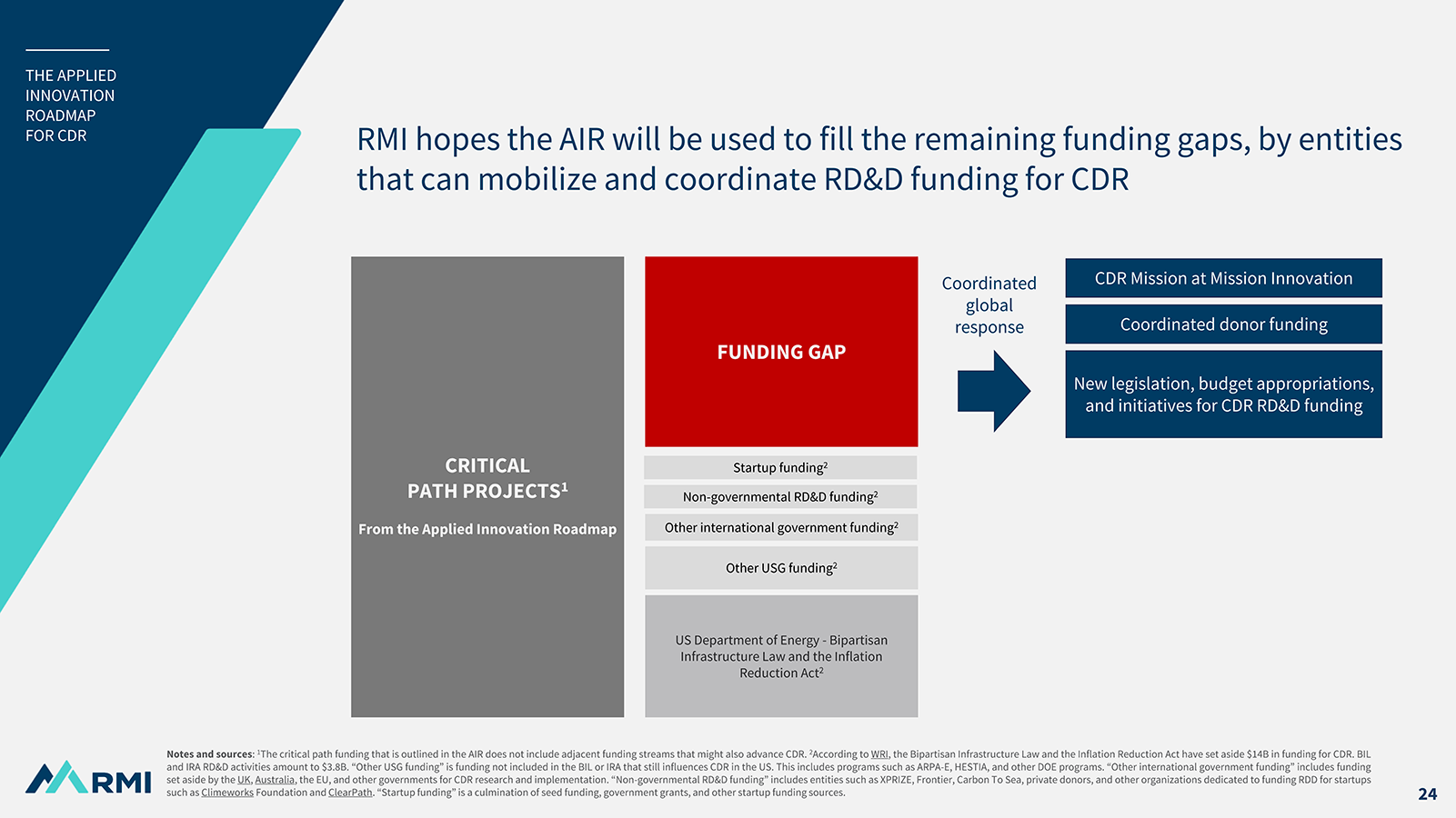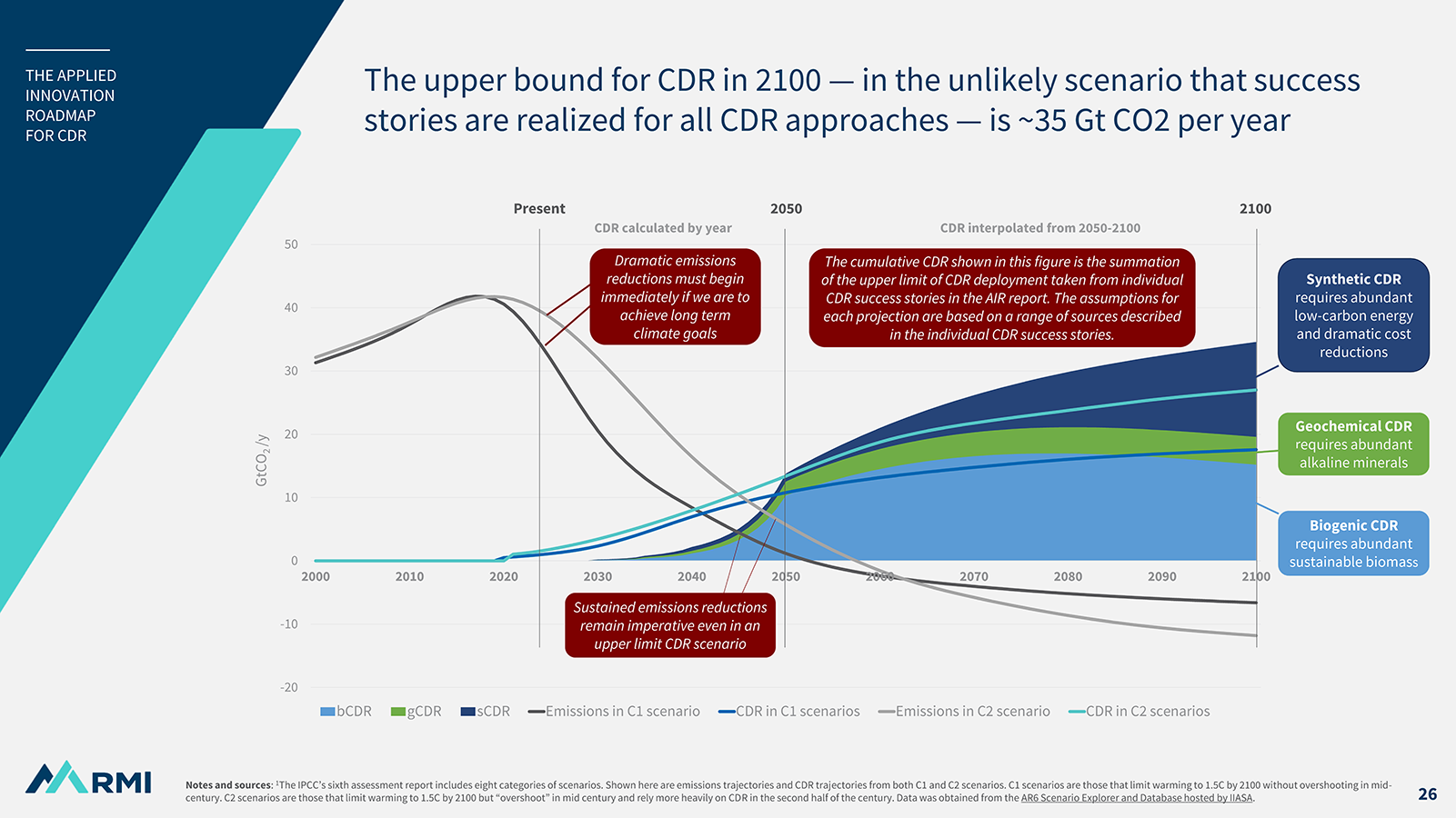
Report | 2023
The Applied Innovation Roadmap for CDR
An independent perspective to guide CDR RD&D funding
RMI’s Applied Innovation Roadmap (AIR) provides a comprehensive, objective, and action-oriented perspective on how to best advance the technical readiness of 32 carbon dioxide removal (CDR) approaches this decade. The roadmap is designed for the global ecosystem of policymakers, public and private sector funders, technology developers, and research organizations that shape research, development, and demonstration (RD&D) activity. It provides complete transparency about the risks and opportunities of all known CDR approaches, and offers visibility and guidance on research, development, and demonstration needs and opportunities.
RMI intends for this roadmap to unlock a larger volume of funding that is coordinated and non-duplicative, to meet those RD&D needs and opportunities. This funding is vital and warranted to achieve the billions of tons of atmospheric emissions removal that the IPCC has identified as essential to avoiding temperature overshoot.
For all 32 approaches, the AIR includes:
- A technical assessment of the challenges each CDR approach may face in achieving technical viability at scale, across scalability, secure storage, measurement, and cost.
- Current state assessments of active companies and projects, by technical readiness level.
- A critical path RD&D roadmap for technical projects and the stage gates required to move from early research to demonstration and commercial deployment.
- A menu of proposed RD&D projects, with project scopes, timelines, budgets, and costs.
The roadmap also includes cross-cutting activities that would concurrently benefit multiple CDR approaches. Two examples include: 1) the development of enhanced cultivars to expand biomass availability, meet competing demands on biomass feedstock, and unlock multiple biogenic CDR approaches; and 2) the integration of RD&D for different CDR approaches into the deep decarbonization and transformation of heavy industry. Success stories for each approach describe optimistic scenarios for technical viability and deployment. They represent the upper limit of what the CDR approaches known today could contribute to mitigating climate change, based on realistic but ambitious increases in deployment.
The success stories suggest a path to reaching the IPCC’s identified need for emissions removal by 2050 and 2100. But, given how narrow and challenging this path looks, it remains imperative that we seek and realize opportunities to reduce emissions faster than the IPCC envisions, while doing the same for scaling CDR.
Download the complete Roadmap to learn more about the CDR opportunities ahead. Click to view excerpted slides below.
Thank you!
Your download should start automatically. Please click here to manually start the download. If you'd like to stay informed with the latest RMI news and insights, sign up for our weekly e-newsletter here.
